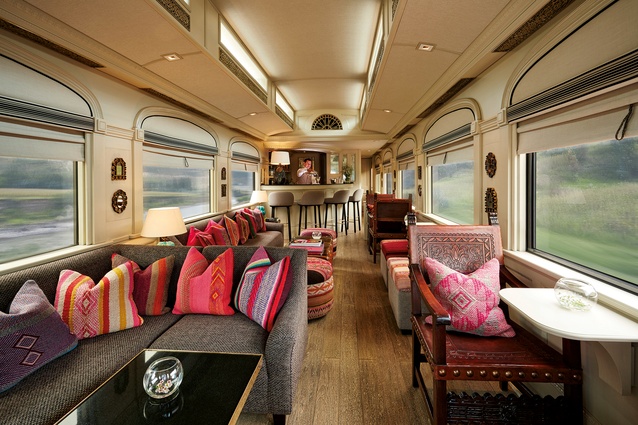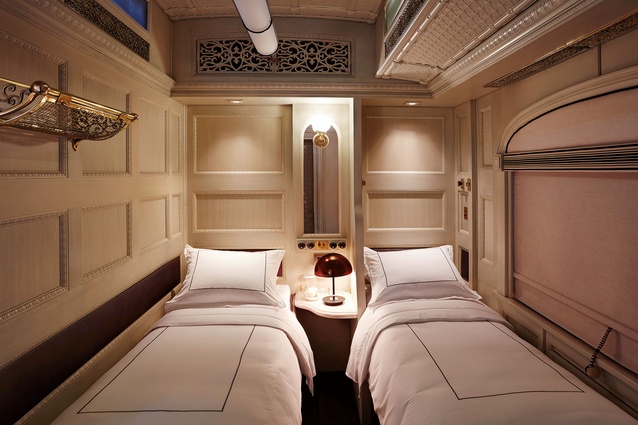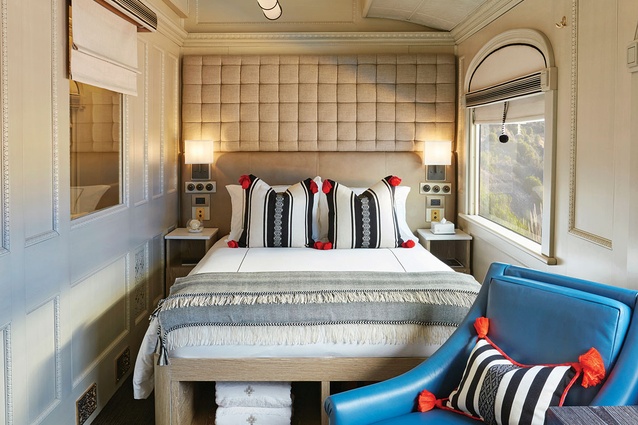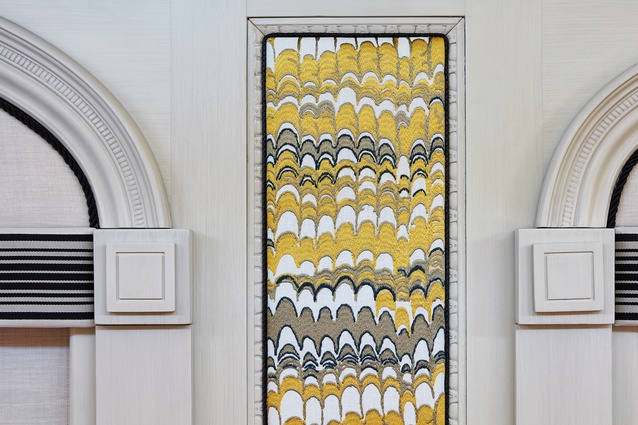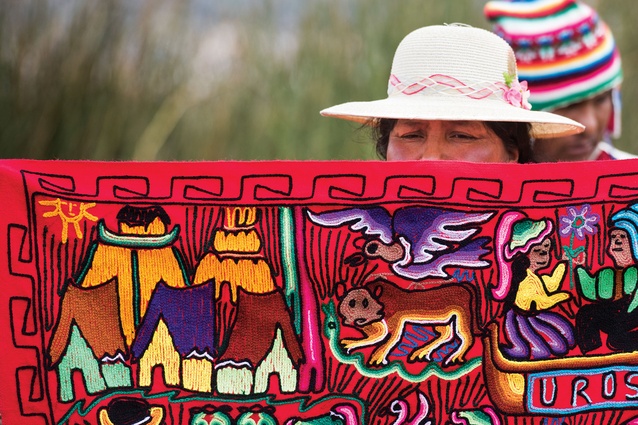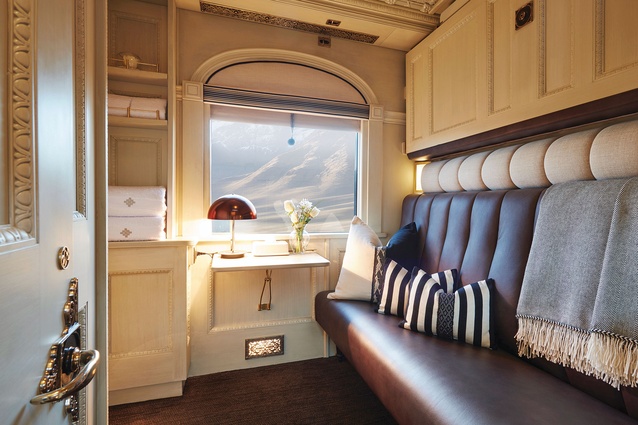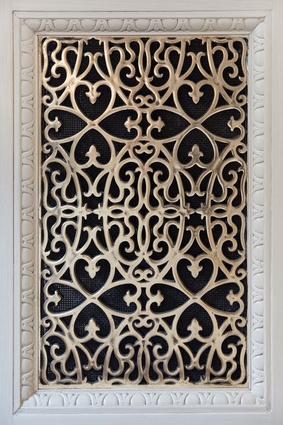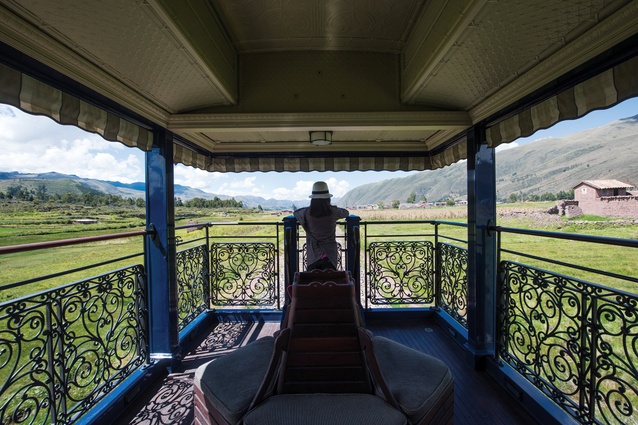Suspended time: the Inca rail
An old Australian train is restored and made into a luscious hotel on rails now conquering the Andes. We speak to its designers, Muza Lab, about their brief and inspiration.
Sure, there is an element of emotional detachment to train travel, a certain understanding that the scenery beyond the carriage windows and the experiences they might represent can never be ‘possessed’ seeing as they are continuously moving, fleeting and in many cases inaccessible by any other form of transport.
Muza Lab, the London-based designers of The Belmond Andean Explorer – a train traversing parts of the famous Peruvian mountain ranges – were well aware of the peculiar temporal qualities of this project.

“The interiors were intended to tap into the train journey’s dreamlike sense of suspended time,” says Inge Moore, founder of Muza Lab. “Palettes, textures and patterns were shaped by the local flora and fauna. They create a sense of calm; a counterpoint to the vibrant panorama outside and a space where travellers can ponder, dream and explore new horizons.”
Nostalgia also plays an important role here. The 1920s Golden Age of rail travel is quite inescapable when approaching such a project but where Muza Lab differentiated themselves was in using the local, indigenous culture as a strong source of inspiration.
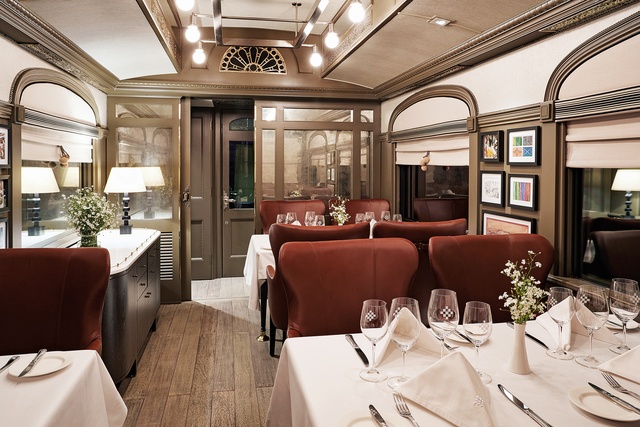
“We wanted to distil the romance, nostalgia and freedom of the train voyage through the interiors,” says Moore, who says to have designed a sort of “immersion into Peru’s culture, landscape and crafts that gives passengers a contemporary, re-imagined way to enjoy the beauty of slow travel.”
Nearly everything, from timber floors to linen, roman blinds and the colourful woven textiles, have been locally sourced or crafted by local artist and artisan communities. On the Observation Car for example, the central round seat is upholstered in fabrics of traditional dresses which Muza Lab found in a Cusco market.

In other areas, the passementerie on the roman blinds is from antique Incan fabrics. “So we restored and introduced nostalgic elements that would allude to this era, for example the luggage racks and ornate air grates. Brass room keys were also forged into the shape of the Chakana Cross, one of the most enduring shamanic symbols of Incan civilisation and the train’s official crest.”
The history of the train carriages themselves has also found its way into the interior detailing. The intricate wrought iron that adorns air conditioner ducts and overhead compartments were part of the original train cars that comprised the Great South Pacific Express in Australia. “The cars were shipped to Peru and restored in Cusco, including all the wrought iron features that create a vintage feel,” according to Moore.
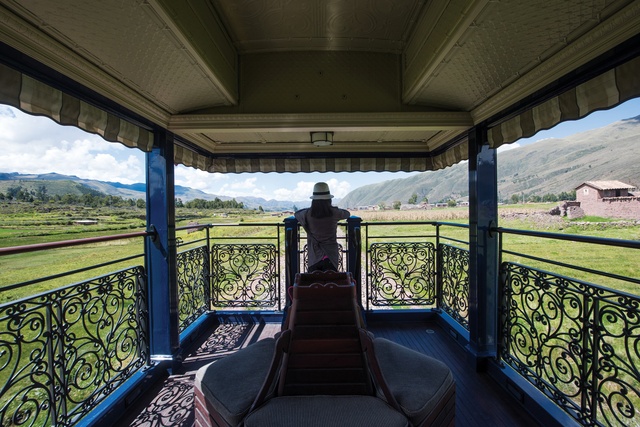
Regardless of the narrowness of the site the designers accomplished a balance between lavish, soft interiors that mix indigenous and contemporary fittings and ensure that the scenery is the star of the experience.
“Soft, neutral tones create an open, airy feel that allows the amazing vistas to take centre stage,” says Moore, “drawing upon the palettes and textures of the majestic terrain, as well as Peruvian crafts and artistry, we have developed an understated concept of luxury”.

